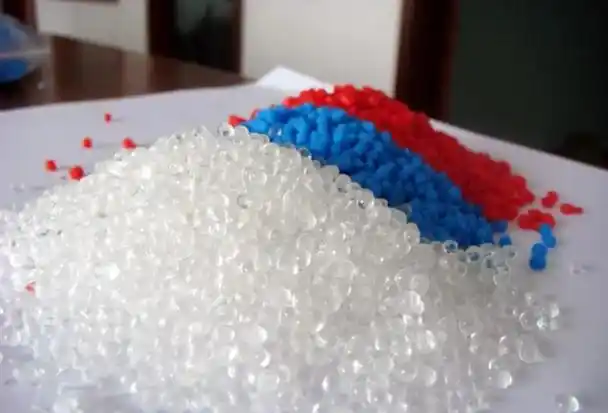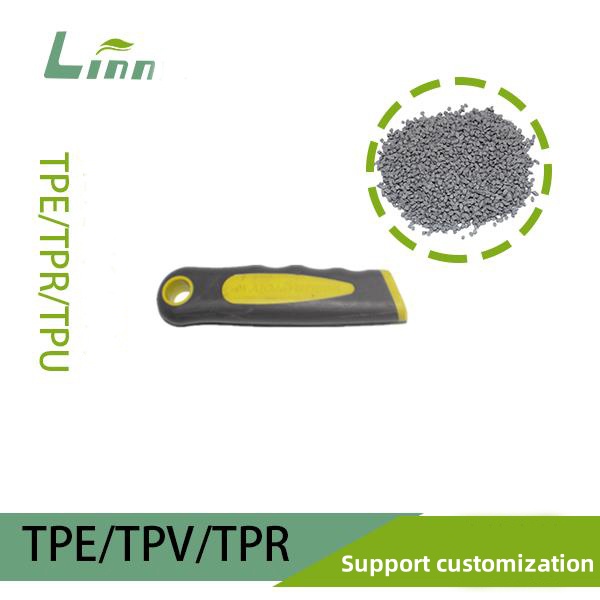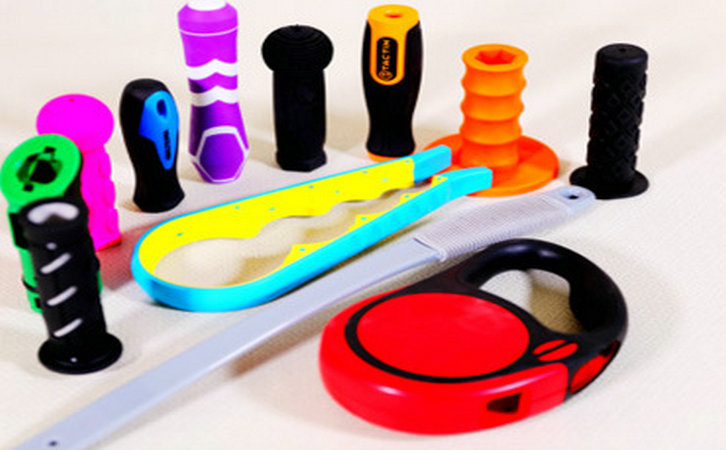As someone who’s been knee-deep in the world of material science for over 15 years, I’ve worked with countless polymers, tweaking formulations to get just the right balance of feel, function, and durability. One question that keeps popping up in my line of work is about TPE and TPU blends—what happens when you mix these two versatile materials? If you’re wondering about the texture, properties, or practical uses of a TPE-TPU blend, I’m here to share my hands-on experience. From product design to manufacturing, I’ve seen these blends in action, and I’ll walk you through what makes them special, why they’re used, and how they perform in the real world.

My First Brush with TPE-TPU Blends
The first time I encountered a TPE-TPU blend was during a project for a sports equipment manufacturer. We were designing a grip for a high-end tennis racket, and the client wanted something that felt soft and cushioned like TPE but had the toughness and abrasion resistance of TPU. When I held the prototype, I was impressed—it had a smooth, slightly grippy texture that felt reassuringly solid yet comfortable. It wasn’t as squishy as pure TPE or as firm as straight TPU; it was a perfect middle ground, like a handshake that’s firm but not bone-crushing.
Since then, I’ve worked with TPE-TPU blends in everything from shoe soles to wearable tech. The blend combines the soft, elastic charm of TPE (Thermoplastic Elastomer) with the rugged durability of TPU (Thermoplastic Polyurethane), creating a material that’s both user-friendly and built to last. If you’ve ever used a phone case that feels soft but doesn’t wear out quickly, chances are you’ve touched a TPE-TPU blend.
Understanding TPE and TPU: The Building Blocks
Before diving into the blend, let’s break down the two materials. As a materials engineer, I’ve spent years testing both TPE and TPU, and they each bring something unique to the table:
TPE: Known for its soft, rubber-like feel, TPE is a thermoplastic elastomer that’s flexible, recyclable, and easy to mold. It’s the go-to for products needing a comfortable, non-slip surface, like grips or seals.
TPU: A subset of TPE, TPU is tougher, with higher abrasion resistance and chemical resistance. It’s less soft but excels in applications requiring durability, like protective gear or industrial components.
When you blend TPE and TPU, you’re essentially combining the best of both worlds: TPE’s softness with TPU’s strength. The exact feel and performance depend on the ratio—more TPE makes it softer, while more TPU adds toughness. In my work, I’ve seen blends ranging from 60:40 TPE-TPU for cushioned grips to 20:80 TPE-TPU for rugged shoe soles.
What Does a TPE-TPU Blend Feel Like?
If you’re picturing the texture, think of a premium phone case or a high-quality shoe insole. A TPE-TPU blend typically feels smooth and slightly tacky, offering just enough grip to prevent slipping without feeling sticky. It’s firm yet pliable, with a slight bounce that makes it feel responsive. For example, in a project for a fitness tracker strap, the blend we used was soft enough to conform to the wrist but durable enough to resist tearing after months of daily wear.

The texture can vary based on the blend ratio and additives. I’ve handled blends that were matte and velvety for a luxurious feel, while others had a slightly glossy finish for a sporty look. In one memorable case, we used a TPE-TPU blend for a yoga mat surface, and the feedback was unanimous: it felt supportive yet cushioned, with just the right amount of grip to keep poses steady.
Key Properties of TPE-TPU Blends
To give you a clearer picture, here’s a table summarizing the properties of TPE-TPU blends based on my experience testing them in various applications:
|
Property |
Description |
Common Applications |
Why It Matters |
|---|---|---|---|
|
Texture |
Smooth, grippy, ranges from soft to semi-firm based on blend ratio. |
Phone cases, wearables, grips |
Enhances user comfort and slip resistance. |
|
Durability |
Combines TPE’s elasticity with TPU’s abrasion and tear resistance. |
Shoe soles, protective gear, seals |
Ensures longevity in high-wear products. |
|
Flexibility |
Highly elastic, returns to shape after stretching or compression. |
Medical tubing, sports equipment |
Maintains shape under stress. |
|
Processability |
Easy to mold and recyclable, similar to TPE, with TPU’s structural integrity. |
Consumer goods, industrial parts |
Cost-effective and eco-friendly production. |
This table reflects what I’ve seen in practice. For instance, in a project for a line of outdoor gear, we used a 50:50 TPE-TPU blend for backpack straps. The material was soft enough for comfort during long hikes but tough enough to resist abrasion from rough terrain.
Why Use a TPE-TPU Blend?
In my years in the industry, I’ve seen TPE-TPU blends chosen for their ability to solve specific design challenges. Here’s why they’re a favorite among manufacturers and designers:
1. Balanced Comfort and Strength
One of my favorite projects was designing a protective case for a rugged tablet used in construction sites. The client needed something that could withstand drops and scratches (TPU’s strength) but also feel comfortable to hold (TPE’s softness). The TPE-TPU blend delivered, creating a case that workers loved for its grippy, cushioned feel and durability.
2. Versatility Across Industries
TPE-TPU blends are everywhere—consumer electronics, automotive parts, medical devices, you name it. I once worked on a medical wearable where the blend was used for a flexible, skin-friendly strap that could endure frequent cleaning without degrading. The blend’s biocompatibility (in certain grades) and durability made it a perfect fit.

3. Cost-Effective Manufacturing
Compared to pure TPU, which can be pricier due to its complex formulation, TPE-TPU blends are often more affordable while maintaining high performance. In a project for a budget-friendly fitness tracker, we used a blend to keep costs down without sacrificing the premium feel customers expected.
4. Aesthetic Flexibility
Blends can be colored, textured, or made translucent, which I’ve leveraged in consumer products. For a line of kids’ headphones, we used a vibrant TPE-TPU blend that was soft, durable, and visually appealing. The kids loved the bright colors, and parents appreciated the tear-resistant design.
Real-World Applications of TPE-TPU Blends
You’ve likely interacted with TPE-TPU blends without realizing it. Here are some common products where they shine:
Phone and Tablet Cases: The blend’s shock absorption and grippy texture protect devices while feeling great in hand.
Footwear: Many athletic shoe soles use TPE-TPU blends for their cushioning and wear resistance.
Wearable Tech: Straps for smartwatches and fitness trackers often rely on the blend’s comfort and durability.
Sports Equipment: Grips for rackets, bikes, or gym equipment benefit from the blend’s non-slip surface.
Medical Devices: Flexible tubing and seals use TPE-TPU blends for their biocompatibility and resilience.
In one project, we used a TPE-TPU blend for a line of reusable water bottle caps. The material was soft enough to create a tight seal but tough enough to withstand repeated twisting without cracking. Customers raved about the secure, leak-proof design, which was a testament to the blend’s versatility.

TPE-TPU Blends vs. Pure TPE or TPU
To help you understand the blend’s unique position, here’s a comparison based on my experience working with all three options:
|
Material |
Texture |
Durability |
Cost |
Best For |
|---|---|---|---|---|
|
TPE-TPU Blend |
Smooth, grippy, soft to firm |
High abrasion and tear resistance |
Moderate |
Balanced comfort and durability |
|
Pure TPE |
Very soft, rubbery |
Moderate, less abrasion-resistant |
Lower |
Soft, flexible products |
|
Pure TPU |
Firm, slightly slick |
Excellent abrasion resistance |
Higher |
Heavy-duty, high-wear applications |
In a project for a line of outdoor speakers, we initially considered pure TPU for its toughness but found it too rigid for the grippy, user-friendly exterior the client wanted. Switching to a TPE-TPU blend gave us the durability of TPU with the soft touch of TPE, making the product a hit.
Challenges of TPE-TPU Blends
No material is without its drawbacks, and I’ve run into a few challenges with TPE-TPU blends:
Balancing Properties: Getting the right blend ratio is tricky. Too much TPE, and the material may lack durability; too much TPU, and it feels too stiff. I’ve spent hours tweaking ratios to hit the sweet spot.
Heat Sensitivity: Like pure TPE, blends can soften at high temperatures. I once had a prototype fail a heat test for an automotive part, so I now ensure heat-resistant additives for high-temp applications.
Cost Variability: While blends are often cheaper than pure TPU, custom formulations can drive up costs. I always recommend testing stock blends first to keep budgets in check.
UV Exposure: Some blends degrade under prolonged sunlight. For outdoor products, I insist on UV-stabilized grades to prevent cracking.
Despite these challenges, I’ve found that working closely with suppliers to fine-tune the blend’s formulation usually resolves most issues. It’s all about understanding the application’s demands.

My Tips for Using TPE-TPU Blends
Based on my years of trial and error, here are some practical tips for anyone considering a TPE-TPU blend:
Define Your Priorities: Decide whether you need more softness (more TPE) or durability (more TPU). I always start by testing a few blend ratios to find the right balance.
Test for Specific Conditions: If the product will face heat, UV, or chemicals, request specialized grades. I learned this after a blend failed in an outdoor test due to UV exposure.
Check Certifications: For medical or food-contact products, ensure the blend is FDA-compliant or biocompatible. I once had to scrap a batch because the supplier didn’t disclose non-certified materials.
Prototype Extensively: Blends can vary slightly between batches. I always order small samples to test texture, durability, and performance before full production.
Why TPE-TPU Blends Are a Game-Changer
After working with TPE-TPU blends across dozens of projects, I’m convinced they’re one of the most exciting materials in modern manufacturing. They offer a unique combination of comfort and toughness that’s hard to beat, whether you’re designing a consumer gadget or an industrial component. The ability to tailor the blend to specific needs—whether it’s a soft, grippy texture or a rugged, long-lasting finish—makes it incredibly versatile.
In one of my recent projects, we used a TPE-TPU blend for a line of eco-friendly fitness gear. The material’s recyclability, comfort, and durability aligned perfectly with the brand’s sustainability goals, and customers loved the premium feel. Moments like that remind me why I’m passionate about materials—they can transform a product from good to unforgettable.
Wrapping It Up
A TPE-TPU blend is like the best of both worlds: it’s soft yet strong, flexible yet durable, and versatile enough to fit countless applications. Whether it’s the grippy case on your phone or the cushioned sole of your favorite sneakers, this blend is quietly making products better. From my perspective as a materials veteran, it’s a material that delivers on both performance and user experience, and I’m excited to see where it goes next. If you’re curious about using it or just want to understand the stuff in your everyday gear, I hope this deep dive has given you a clear picture of what makes TPE-TPU blends so special.

Related Questions and Answers
Q: Can TPE-TPU blends be recycled?
A: Yes, most blends are recyclable, like pure TPE, which is a big plus for eco-conscious designs. I’ve worked with manufacturers who reprocess scraps to reduce waste, but always confirm with your supplier.
Q: Are TPE-TPU blends safe for medical use?
A: Certain grades are biocompatible and safe for medical applications, like tubing or wearables. I always ensure the blend meets ISO 10993 or FDA standards for skin-contact products.
Q: How do TPE-TPU blends hold up in extreme conditions?
A: They perform well but can soften in high heat or degrade under UV exposure. I recommend heat- or UV-stabilized blends for demanding environments like outdoor gear.
Q: Are TPE-TPU blends more expensive than pure TPE?
A: They can be slightly pricier due to TPU’s cost, but they’re often more affordable than pure TPU. In my projects, blends have been a cost-effective way to get both comfort and durability.





